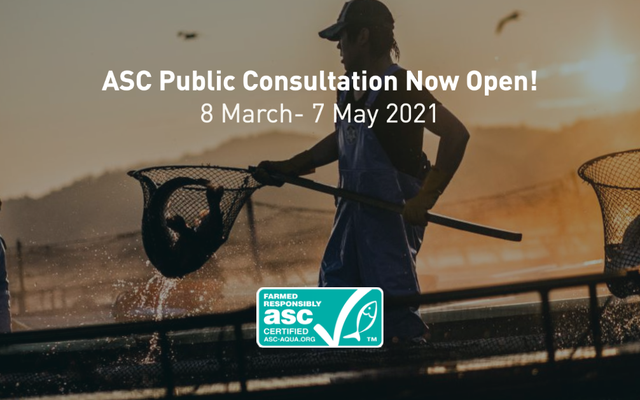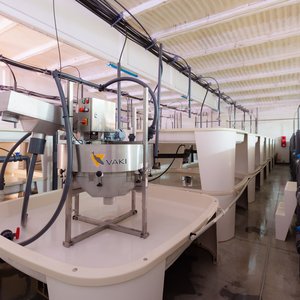ASC launched a major consultation on proposed environmental requirements for the aligned Farm Standard, which will cover all certified species bringing efficiencies and improvements without compromising on quality. It is part of one of ASC’s largest-ever rounds of public consultations, with stakeholder feedback also sought for the development of the ASC Chain of Custody Module which expands ASC’s supply chain assurance.
Stakeholders can view webinars on the ASC website which set out what the new proposals are for each topic and can then feedback on any or all of these topics using a survey, all on the dedicated page for the environmental requirements of the ASC Farm Standard. The consultations will run for two months, from March 8 to May 7, 2021.
The project to develop the aligned Farm Standard covering all ASC certified species will bring major improvements to the program. It will deliver greater consistency across species and culture systems, delivering efficiency and simplifying the introduction of updates across the program. Currently, ASC manages a number of separate farm standards covering different species. They all provide an industry-leading set of robust environmental and social requirements, but because they have been developed at different times, they can vary on how some of the impacts that are common across aquaculture are addressed.The aligned Farm Standard will cover all of these common impacts in one robust and thorough standard, which includes species-specific requirements which must also be met by the relevant farms.
“ASC’s standards are the most robust in the industry and that’s not changing. A salmon farm will still have to address all of the impacts of salmon farming under the aligned Farm Standard, and a seabass farm will have to reduce all of the impacts of seabass farming. But what the new standard provides is greater consistency when it comes to the many impacts that are common to most aquaculture – things like siting, energy emissions, escapes, and water use,” said Michiel Fransen, director of ASC Standards and Science. “This means that culture-system impacts will be holistically covered and species-specific impacts will be retained and be as robust as when originally drafted. All these proposed improvements will go through the same comprehensive development process involving multi-stakeholder expertise and public consultation – but in a more efficient manner because consultation will no longer be required for individual species-standards.”
By developing one comprehensive standard covering all these impacts, ASC will be able to respond to changes in the markets and industry more swiftly – if a new species needs to be added to the program, the species-specific requirements can be developed and added to the Farm Standard, rather than developing an entire separate standard from scratch.
The Farm Standard will be split into three principles. P1 covers legal compliance, P2 covers environmental impacts and P3 covers social impacts. The proposed indicators for P1 and P3 were published for public consultation in 2019, and that feedback is being used to finalize them. The current consultation is looking at P2 – environmental indicators. Because of the large number of environmental issues covered by ASC standards, these will be divided into two rounds of public consultation. The second round of consultation will take place in September 2021.
The following indicators from P2 of the Farm Standard are covered during the current consultation, running from March 8 to May 7:
- Antibiotic and other veterinarian chemical use
- Sea lice
- Salinity
- Sludge
- Escapes
- Non-natives
- Energy use and greenhouse gasses
- Ecosystem interaction
- Wildlife interaction
- Benthic impacts
The following indicators will be covered during the next round of public consultation in September:
- Fish welfare
- Benthic impacts (continuation)
- Water quality
- Waste (including marine litter) and pollution control
- Broodstock, fingerling and seed production
- Impact assessment













